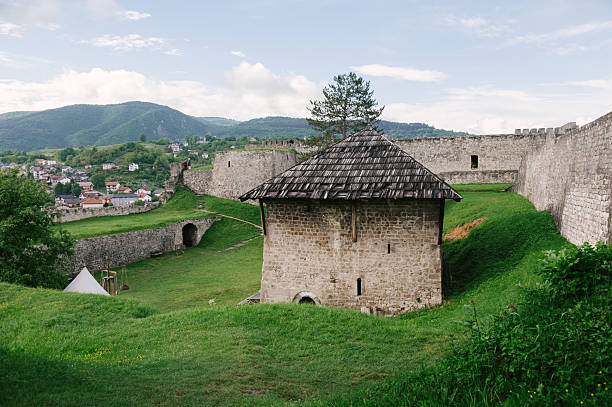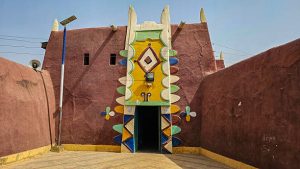A Journey Through History: Ottoman and Austro-Hungarian Heritage in Bosnia

Bosnia and Herzegovina is a place that is a meeting point of East and West, an intercultural connection between Europe and the Ottoman world. Tourists on a Bosnia Heritage Tour usually feel like they are stepping back in time, with minarets standing alongside baroque cathedrals, Ottoman trading plazas and cobblestone streets mumbling of the past life of empires. Bosnia and Herzegovina is a unique mixture of civilizations, which almost never exists in other European countries, with the most influential influence of both the Ottoman Empire in the 15th century and the Austro-Hungarian Empire in the 19th century.
Being either a history lover, a cultural tourist or just interested into exploring a unique place to visit, a Bosnia and Herzegovina Tour will lead to a magical past. Cities such as Sarajevo and Mostar are living museums where Ottoman bridges can be found, as well as Austro-Hungarian theaters and museums, which represent a variety of identities of the nation. There is always a surprise among the visitors that Bosnia is not merely all about beautiful natural landscapes including rivers, mountains, and valleys but also a wonderful historical experience. With the help of the specialized Bosnia Holiday Packages, you will get the access to the carefully organized itineraries, emphasizing not only the Ottoman heritage, including mosques, caravanserais, and bazaars, but also the well-preserved Austro-Hungarian masterpieces, like the railways, opera houses, and government buildings.
The Ottoman Legacy in Bosnia
Arrival of the Ottomans
Bosnia is left with strong cultural, building, and social heritage by the Ottoman Empire, which established its presence in Balkans in the 15 th century. It was during this time that the character of towns and cities was formed, introducing Islam, oriental art and special forms of city development. During your visit to Bosnia Heritage Tour, you will realize that the Ottoman was more inclined towards colorful market places, mosques in the middle of the city and bridges that linked the people.
Religious Architecture and Ottoman Mosques.
The impact of Ottoman presence in Bosnia is perhaps one of the most astonishing parts of the Ottoman legacy and their constructions of mosques and other religious establishments are numerous. The Gazi Husrev-beg Mosque, which was built in Sarajevo in the 16 th century, is a place that cannot be left out. Stunning domes and beautiful courtyard make this mosque one of the best Ottoman architectural buildings in the Balkans. Such mosques were not merely a place of worship, but cultural centers where people learned, amassed charity, and led communal lives.
Bazaars and Caravanserais
Visit of Ottoman bazaars would have been the missing piece of the puzzle in the Bosnia and Herzegovina Tour. The capital is the center of the Ottoman legacy in Sarajevo, the commercial center of Baščarshija. Small streets with copperware, rugs, old coffee sets, and crafts remind of the oriental style of the centuries ago. Next to caravanserais used to be the resting point of traders and this shows the strategic location of Bosnia in the Ottoman trade routes.
Iconic Ottoman Bridges
The Ottomans were the best bridge builders and some of the most iconic works were created in Bosnia. The most well known one is the Old Bridge (Stari Most) in Mostar, which was constructed in the 16 th century. This beautiful arch by Neretva River is a UNESCO world heritage site which symbolizes strength and communion. Its post war reconstruction episode of the 1990s was a symbolic rebirth of Bosnian culture. The Old Bridge is not merely a masterpiece of architecture on your Bosnia Heritage Tour, it is a breathing testament of the spirit of the nation that has been there all the time.
Bosnian History Austria-Hungary.
The Ottoman to the Austro-Hungarian Rule.
Now the new era started with the Austro-Hungarian Empire conquering Bosnia at the end of the 19 th century. This was a period of European modernization, western form of governance and renaissance. The Austro-hungarians brought the Gothic, Baroque and Secessionist styles of architecture unlike the Ottomans who were characterized by focus on Islamic and oriental influences.
City Revitalization of Sarajevo.
Formerly, Ottoman city Sarajevo started to look like a Central European capital in the nature of the Austro-Hungarian rule. Its skyline was changed by wide boulevards, elegant administrative structures as well as cultural institutions. The Sarajevo City Hall (Vijećnica) is a fusion of neo-Moorish and Austro-Hungarian architectural styles, and is still a vivid illustration of this period. A stop here on your Bosnia and Herzegovina Tour will demonstrate how two empires left some footprints of their cultural backgrounds intertwined.
Railway and Infrastructure.
The infrastructure of Bosnia was also modernized by the Austro- Hungarians who constructed railway systems, post agencies, and schools. Trade and tourism was made possible by the renowned SarajevoPloče railway which linked the interior to the Adriatic coast. To those who choose to go on the Bosnia Holiday Packages, visiting these routes is usually a journey in circles to the same route visited more than a century ago.
Cultural and Intellectual Development.
Other additions to the Austro-Hungarian era were the theaters, opera houses, and schools. These schools transformed Sarajevo and other cities into the cultural centres introducing opera, classical music and literature that brought Bosnia the multiethnic identity. The National Museum of Bosnia and Herzegovina that was created during this time is considered to be one of the greatest collections in the country.
Sarajevo A City of Two Heritage.
It is probably in Sarajevo where the Ottoman and the Austro-Hungarian influences can be felt the most. During the same walk, you can go through Ottoman-era Baščarshija, Austro- Hungarian boulevards, past mosques, synagogues, Orthodox churches and Catholic cathedrals. Such a mixture of traditions makes Sarajevo the center of any Bosnia Heritage Tour.
Mostar: The Herzegovina Jewel.
The city has the most recognizable landmarks in the Old Bridge and the old town of Mostar which has an Ottoman style, however, the influence of the Austro-Hungarian rule is also traced in administrative buildings and schools. It is history one walks through Mostar and every stone and arch has a story to tell about the empire and survival.
Other Heritage Sites and Cities.
- Travnik -An old seat of the Ottoman viziers, with its colorful mosques and fortresses.
- Jajce -A medieval town having layers of the Ottoman and elements of the Austro-Hungarian influence, specializing in a waterfall.
- Banja Luka – resembles Austro-Hungarian planning in its streets and in the buildings of the administration.
- Here are Konjic bridges of Ottoman type and Austro-Hungarian military buildings.
Living the Bosnian World of Heritage.
Heritage is not merely about buildings in Bosnia, it is about living traditions. Your Bosnia Heritage Tour is immersive with Ottoman coffee rituals, traditional arts such as copper engraving, and the Austro- Hungarian cultural festivals. A significant number of Bosnia Holiday Packages incorporate food tours and you find yourself having Ottoman-inspired cuisine such as ćevapi and baklava as well as Austro-Hungarian pastries and coffee.
Conclusion
Bosnia and Herzegovina is not only a picturesque country; it is also a melting pot of cultures with the Turkish and the Austro-Hungarian cultures coming together to coexist with each other. A Bosnia Heritage Tour is an experience of centuries of history that will leave its mark on the identity of the country even now. Between the mosques and bridges bearing evidence of the Ottoman splendor, the opera buildings and the museums bearing evidence of the Austro-Hungarian aspiration, there is the two-legitimate heritage of Bosnia, which lets down the traveler like no other country.
When you visit Bosnia and Herzegovina Tour Packages, you are guaranteed of a both enriching and hassle free journey. You will be a living museum of history when you walk through the Bašcsarija of Sarajevo, be awe-struck by the Old Bridge of Mostar, or you will find yourself being amazed by the Austro-Hungarian boulevards. In the case of a traveler who wants to visit Bosnia in order to experience some cultural tourism, the Bosnia Holiday Packages offers the perfect entry point to the Balkan core.




